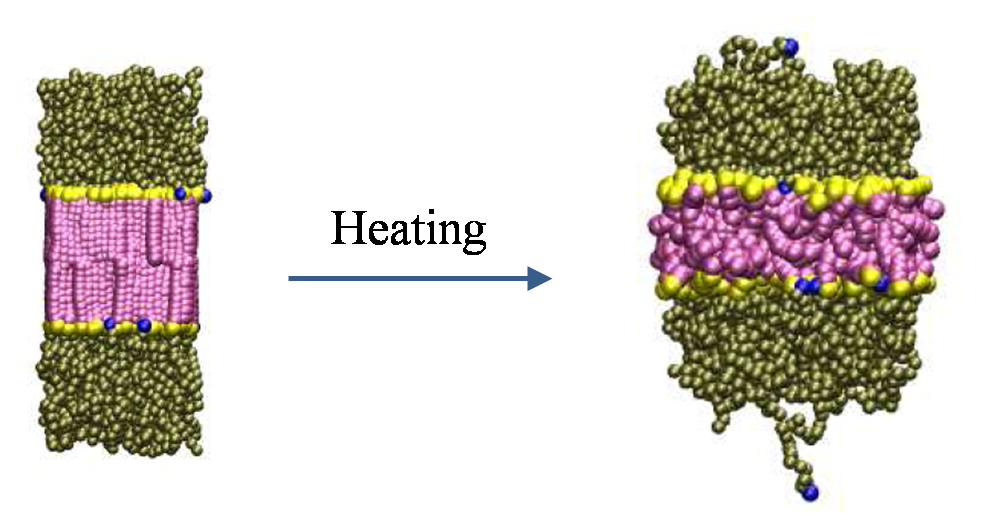Research in our group is focused on developing an understanding of the molecular interactions at interfaces. These interfaces include solid-liquid, solid-gas and more complex interfaces encountered in surfactant mesophases and biological membranes. We use modeling techniques ranging from ab initio methods to study interactions at the electronic scale, molecular modeling methods to study the atomistic and mesoscale as well as continuum models to study heat and mass transport. A brief description of ongoing research is given below.
1. Confined Fluids and Nanomaterials for EnergyWhen a fluid is confined to nanometer dimensions or restricted due to the presence of a surface, the structure and dynamics of the fluid are considerably altered. We are interested in understanding confined fluid structure and thermodynamics relevant to gas separations using zeolites, metal organic frameworks (MOFs) and porous carbons. We also study fluids adjacent to more complex interfaces, such as biological membranes and reverse micelles. Using a combination of ab intio and Monte Carlo methods we are exploring novel aspects of functionalized graphene for methane and carbon dioxide storage, developing onboard storage solutions and studying rotational and translation dynamics for hydration water in reverse micelles and bilayer membranes.

2. Cell Membranes and Soft Interfaces
Biological membranes are a critical component of all living systems, providing a dynamic enclosure to the cellular environment using its tailored chemical and mechanical properties. The membrane primarily consists of a lipid bilayer which imparts a variety of specific functional capabilities. Using a combination of theoretical, simulation and experimental methods, research in this area is focused on understanding the mechanism of pore forming toxins and interactions of nanoparticles on supported membrane platforms, vesicles and RBCs. Pore forming toxins are essentially proteins that attack the living cell membrane through a process of membrane binding and oligomerization. The precise mechanism for pore formation and ensuing effects on the membrane mechanical properties or mechanical stability of cells that undergo lysis is poorly understood. The interactions of proteins and nanoparticles with bilayer membranes have implications in developing novel drug and gene therapies.
